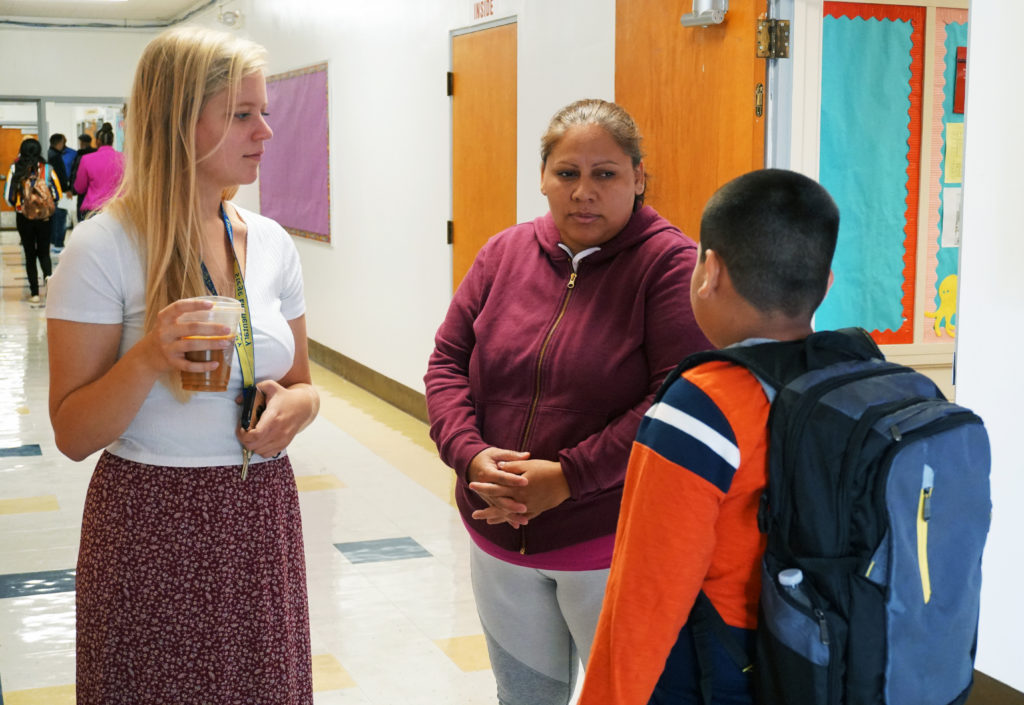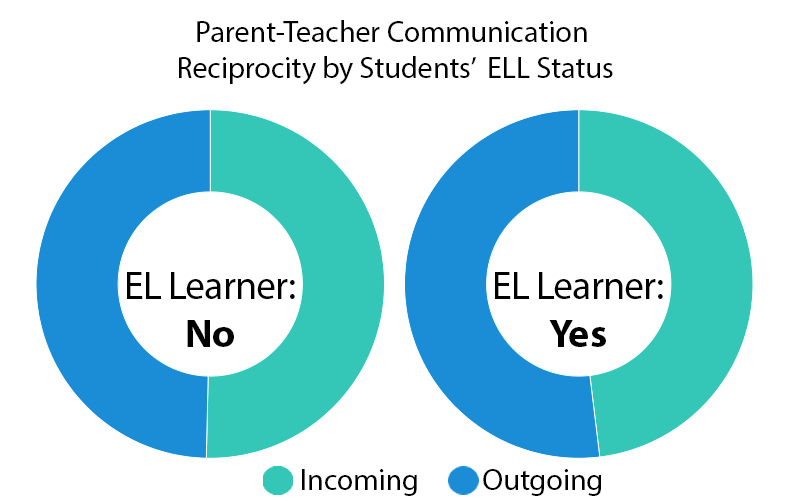
Black teachers: How to recruit them and make them stay

Lessons in higher education: What California can learn

Keeping California public university options open

Superintendents: Well-paid and walking away

The debt to degree connection

College in prison: How earning a degree can lead to a new life

The term “digital equity” has been talked about in K-12 circles for several years, but Covid school closures brought increased attention to the issue. Digital equity can take on many forms. Within a single school district, crucial components of learning such as internet access, device availability, technological skills, and accessible content vary significantly from household to household.
Addressing these challenges requires more nuance than providing the same services and devices to every student. Instead, equity requires that districts take a closer look at individual student needs regarding technology and accommodate those differences.
Digital equity likewise impacts parents. While much focus has been on improving access to technology for students, an area of digital equity that often gets overlooked is how parents are expected to engage with their children’s schools.
The importance of communication between school and home cannot be overstated. Research shows that students with engaged families earn higher grades and test scores, adapt more quickly, attend school more regularly, have better behavior and social skills, and go on to graduate at higher rates. Parents who have an idea of what is happening in the classroom are better equipped to help their students succeed and can align learning at home with learning at school. That’s why equitable communication with parents needs to be part of a district’s overall equity goals.
Equitable parent communication requires schools to meet each parent where they are, especially considering that nearly 1 in 4 U.S. homes live without internet access. Parents who do not have smartphones and personal computers should have the same access to their children’s teachers as parents with the latest technology. Communication should also consider and support parents with busy schedules and parents who do not speak English.
Often districts will employ communications platforms that require a parent to log into a portal (requiring a computer or smart-phone access), opt into a messaging service, or download software. Each of these obstacles restricts communication pathways for parents who do not have access to the required technology.
Communication tools that have low or no entry barriers and allow parents direct access to their children’s teachers have the greatest potential to improve both school-home relationships and student performance. Districts should consider platforms that enable parents to receive phone calls to a landline and SMS messages to a standard cell phone.
Also, platforms that focus on “blast” and “mass” types of messaging are sufficient for distributing information pertinent to an entire classroom or school but miss the mark on developing meaningful relationships with individual parents and creating real engagement. Districts should opt to use tools that create digital parity for parents and foster an environment where meaningful conversations can take place.
Take, for example, the image on the right from a real tool that is used for parent-teacher communication. It depicts one school’s parent-teacher engagement by classifying messages into broadcasts vs one-to-one messages. The pie chart shows that nearly 70% of all messages sent this academic year were mass style messages and fewer than one-third were direct communications between the teacher and a parent.
The bar chart below breaks the data down by individual teachers, which shows the type of communication — whether mass or one-to-one — that was chosen by each teacher and how often. Administrators can see which teachers to work with to transition mass messaging to more one-on-one communication through constructive communication practices.

 Districts should also consider direct exchanges to see the level of reciprocity between parents and teachers. Ideally, the number of emails between a parent and a teacher should be about even, indicating that both the parent and the teacher consistently communicated with each other. And it is important to look at this by student group such as race or English learner status. For example, the chart to the right shows communication reciprocity remained balanced between incoming and outgoing messages regardless of students’ English language learning status.
Districts should also consider direct exchanges to see the level of reciprocity between parents and teachers. Ideally, the number of emails between a parent and a teacher should be about even, indicating that both the parent and the teacher consistently communicated with each other. And it is important to look at this by student group such as race or English learner status. For example, the chart to the right shows communication reciprocity remained balanced between incoming and outgoing messages regardless of students’ English language learning status.
Parent support continues to be the most important factor on the path to graduation. District communication tools must support positive school-home relationships. Investigate your current communication efforts and remove barriers based on the unique needs of your school community. Equitable communication is the pathway to engaging all parents in supporting student success.
•••
Russ Davis is founder and CEO of SchoolStatus, a company that provides communication and analytics tools for school districts.
The opinions in this commentary are those of the author. If you would like to submit a commentary, please review our guidelines and contact us.

Part-time instructors, many who work for decades off the tenure track and at a lower pay rate, have been called “apprentices to nowhere.”

A bill to mandate use of the method will not advance in the Legislature this year in the face of teachers union opposition.

Nearly a third of the 930 districts statewide that reported data had a higher rate of chronic absenteeism in 2022-23 than the year before.

The move puts the fate of AB 2222 in question, but supporters insist that there is room to negotiate changes that can help tackle the state’s literacy crisis.
Comments (5)
Comments Policy
We welcome your comments. All comments are moderated for civility, relevance and other considerations. Click here for EdSource's Comments Policy.
Jasmine Saunders 2 years ago2 years ago
While one-to-one communication is absolutely effective, it’s practicality is more challenging. I have used platforms that do allow me as a classroom teacher to send a message to the whole class, parents receive it the same way as if I had sent it individually. One of the positive pieces from virtual learning, was that in my district we had set office hours built into our school day, which was intended to use for communication … Read More
While one-to-one communication is absolutely effective, it’s practicality is more challenging. I have used platforms that do allow me as a classroom teacher to send a message to the whole class, parents receive it the same way as if I had sent it individually. One of the positive pieces from virtual learning, was that in my district we had set office hours built into our school day, which was intended to use for communication with parents. Without having designated time to do so, not only would be difficult, but would further extend the duties of teachers unless something else is removed from our plates. Parent engagement and communication is vital, and I hope we can move to a place where we can support effective communication without contributing ti further burnout.
PHILLIP LEASURE 2 years ago2 years ago
Print out a flyer and send it home with the students. Mail a letter. Problem solved.
Replies
Jasmine Saunders 2 years ago2 years ago
While printed notices work in some scenarios, I cannot tell you the number of times they never make it to parents/families. Whether they get trashed, left in backpack, stuffed in desk-or if mailed, (while maybe more reliable) timing is an issue, not to mention, depending on who checks the mail, still runs the risk of not being received by parent.
Brenda Lebsack 2 years ago2 years ago
Excellent article Mr Davis, Have you also considered equity as it relates to MTSS (Mult-Tiered Systems of Support). Schools are now partnering with many outside agencies since the implementation of MTSS. Many of these agencies gain access to students on digital platforms. However, most parents are unaware of these partnering agencies, what type of access they have with their child, and what type of advice or services their children are attaining … Read More
Excellent article Mr Davis, Have you also considered equity as it relates to MTSS (Mult-Tiered Systems of Support). Schools are now partnering with many outside agencies since the implementation of MTSS. Many of these agencies gain access to students on digital platforms. However, most parents are unaware of these partnering agencies, what type of access they have with their child, and what type of advice or services their children are attaining through these agencies. Here is an article I wrote about this. https://interfaith4kids.com/index.php/our-media/schools-conspire-with-outside-groups-behind-parents-backs-to-counsel-kids-on-myriad-gender-choices
Replies
Jasmine Saunders 2 years ago2 years ago
I think the article you linked, missed the mark for what this article was referring to. Platforms used for communication (Class Dojo, School Loop, Q) are nowhere near what you referenced in your article. The platforms used are strictly for communication, sharing student work, grades etc. At no point have I ever heard of districts using Planned Parenthood as a COMMUNICATION PLATFORM. As an educator, it concerns and appalls me to see … Read More
I think the article you linked, missed the mark for what this article was referring to. Platforms used for communication (Class Dojo, School Loop, Q) are nowhere near what you referenced in your article. The platforms used are strictly for communication, sharing student work, grades etc. At no point have I ever heard of districts using Planned Parenthood as a COMMUNICATION PLATFORM. As an educator, it concerns and appalls me to see the attempts to misconstrue and disseminate information solely for the purpose of stirring fear in parents and the public.